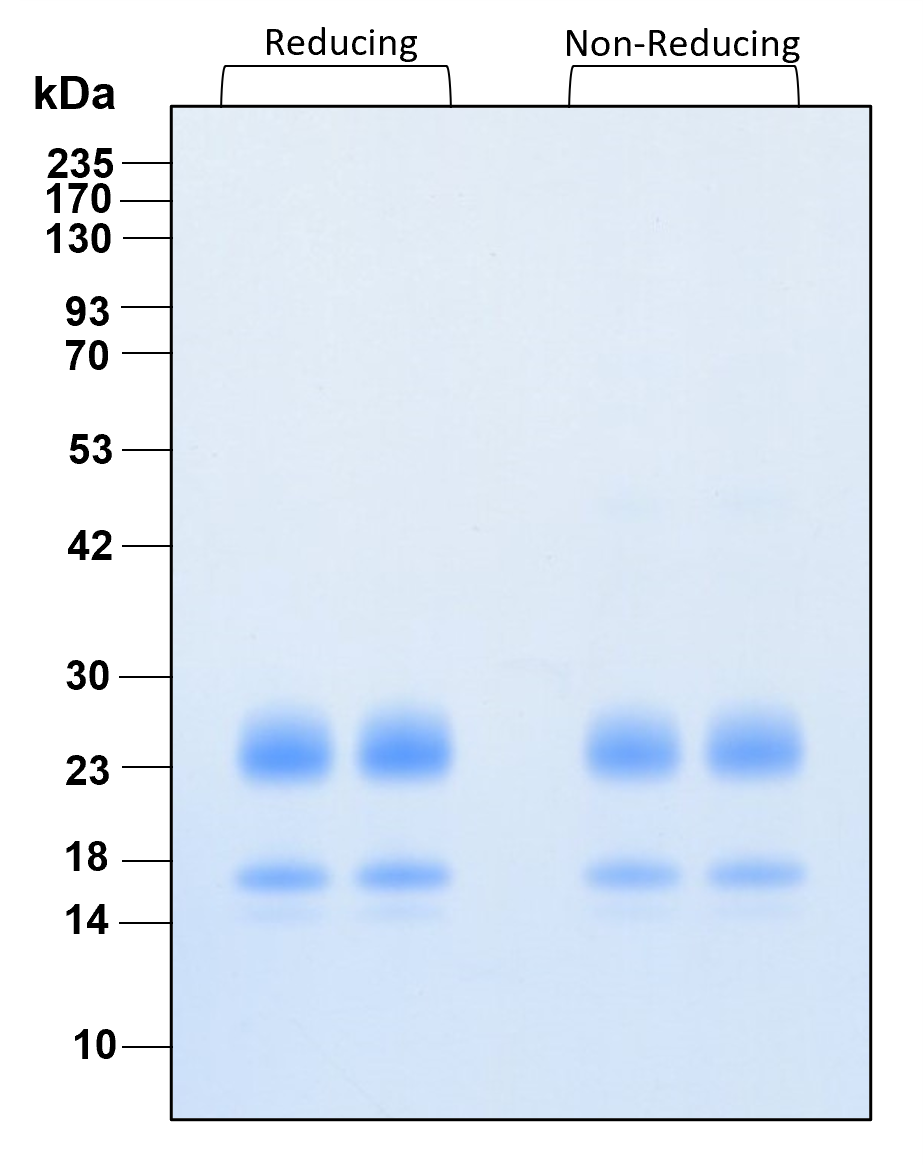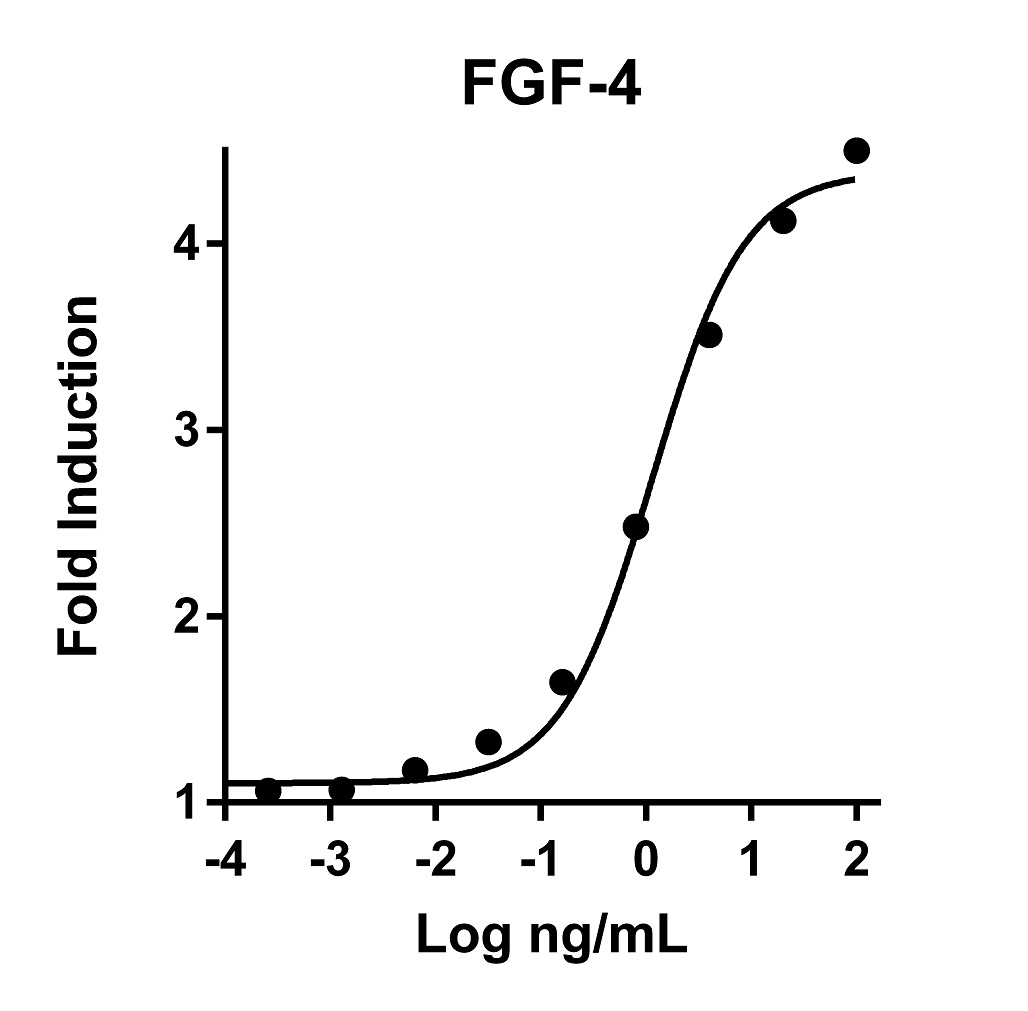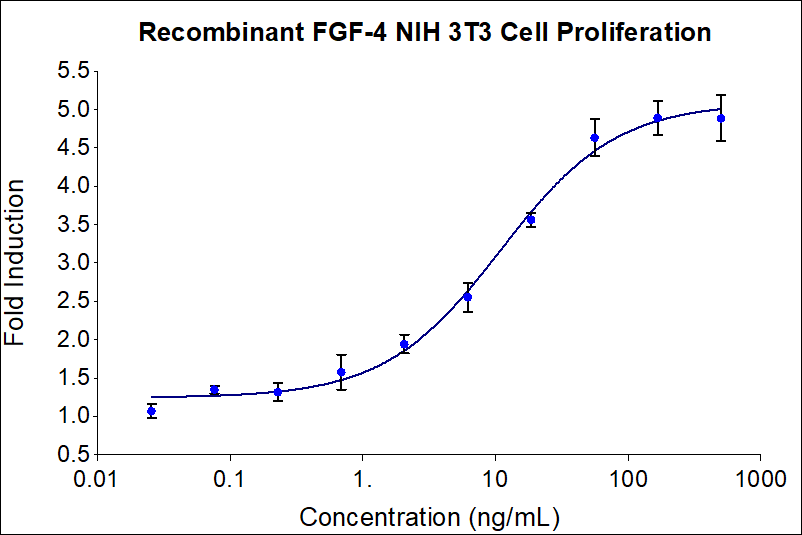Validation Data Gallery
Technical Specifications
| GeneID | 2249 |
| Species | Human |
| Expression | HEK293 |
| Activity | ≤ 1.25 ng/mL in Balb/c 3T3 cells. 6-30 ng/mL in NIH 3T3 cells in defined media |
| Purity | >95% |
| Endotoxin | <1 EU/μg |
| Accession Number | P11403 |
| Molecular Mass | 17 and 27 kDa reduced and non-reduced, monomer, glycosylated |
| Formulation | 1x PBS, See Certificate of Analysis for details |
| Species Reactivity | human,mouse |
Stability and Reconstitution
| Stability and Storage | Product Form | Temperature Conditions | Storage Time (From Date of Receipt) |
|---|---|---|---|
| Lyophilized | -20°C to -80°C | Until Expiry Date | |
| Lyophilized | Room Temperature | 2 weeks | |
| Reconstituted as per CofA | -20°C to -80°C | 6 months | |
| Reconstituted as per CofA | 4°C | 1 week | |
| Avoid repeated freeze-thaw cycles. | |||
| Reconstitution | Briefly centrifuge the vial before opening. It is recommended to reconstitute the protein to 0.2 mg/mL in sterile 1x PBS pH 7.4. Gently swirl or tap vial to mix. |
Background
Fibroblast growth factor-4 (FGF-4) plays an important physiologically role in the self-renewal of human embryonic stem cells (PMID 21990129). It also promotes stem cell proliferation and may aid in differentiation. Xeno-free Recombinant Human FGF-4 is expressed in human 293 cells as a monomeric glycoprotein with an apparent molecular mass of 17 and 27 kDa.
Synonyms
FGF 4, FGF4, FGF-4, fibroblast growth factor 4, HBGF 4, HST, HST 1, HSTF 1, HSTF1, K FGF, KFGF, KS3, Transforming protein KS3
Publications
| Species | Title |
|---|---|
Nat Commun Selectively targeting the AdipoR2-CaM-CaMKII-NOS3 axis by SCM-198 as a rapid-acting therapy for advanced acute liver failure | |
J Cell Commun Signal Dysregulation of Notch-FGF signaling axis in germ cells results in cystic dilation of the rete testis in mice. | |
J Cell Mol Med S-Nitrosylation of NOTCH1 Regulates Mesenchymal Stem Cells Differentiation Into Hepatocyte-Like Cells by Inhibiting Notch Signalling Pathway |




